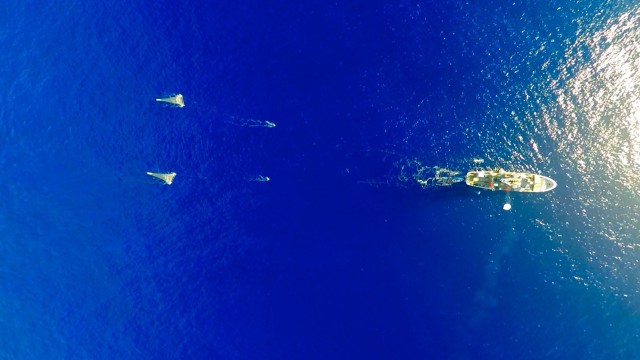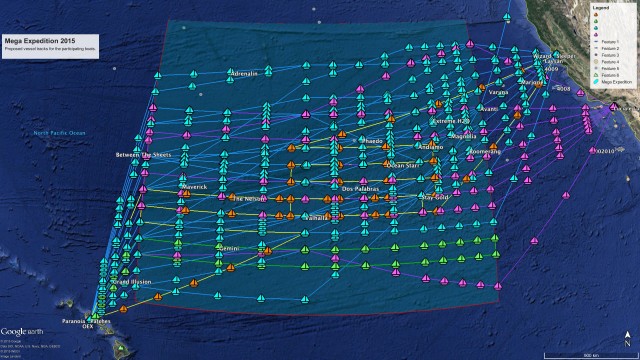
Plastic
ocean debris littering Hawaiian shoreline. Hawaii is located near the
center of the North Pacific gyre where debris tends to concentrate.
(NOAA)
The first group of boats from the 30 vessel fleet, along with the Ocean Starr, a former NOAA research vehicle which served as the expedition’s “mother ship”, ended their journey when they sailed into in the port of San Francisco on Sunday, 8/23/15.
The Dutch environmental organization founded by Boylan Slat, called the Ocean Cleanup conducted its Mega Expedition Reconnaissance Mission through the massive collection of marine debris so that it could gather data to find out how much plastic is actually floating in the Pacific Ocean.
Nearly 8 million tons of plastic, mostly from land enters the ocean every year said a recent study.
Researchers say that portions of this huge collection of plastic, along with other forms of marine debris, gathers in five areas of the world’s oceans where the currents meet called the gyres.
A 2014 study found that currently there are at least 5.25 trillion pieces of plastic floating in the oceans with about third of it concentrated in the Great Pacific Garbage Patch.
The impacts of plastic pollution include harm to the environment, economy and human health.

The
Ocean Cleanup’s Mega Expedition mothership R/V Ocean Starr is shown
here deploying the two 6 meter-wide ‘mega nets’, two ‘manta trawls’, and
its survey balloon with camera at the center of the Great Pacific
Garbage Patch. ((C) The Ocean Cleanup/Skyframes)
Toxic chemicals that are found in and can be amplified by the plastic pollutants enter the human daily diet through fish and other edible sea creatures who consume plastic polluted food.
Health effects that have been tied to these food borne chemicals include cancer, birth defects, immune system problems, and childhood developmental issues.
The Ocean Cleanup group plans to use the gathered data to create the first high-resolution map of plastic in the Pacific as well as to help in the preparation for the organization’s large scale ocean cleanup project that’s planned for 2020.
The thirty vessels sailed in parallel with each other over a 3.6 million square kilometer course in the Pacific Ocean. Over the month long period, the boats made around fifty crossings between the U.S. West Coast and Hawaii to conduct surveys on the amount of plastic they came across.

Map
showing the 50 transects the Mega Expedition will perform based on
routing information provided by the skippers before they left port.
Copyright: The Ocean Cleanup ((C) The Ocean Cleanup/Lys-Anne Sirks)
To study large objects like ghost nets – fishing nets lost or left in the ocean – and debris from the 2011 Japanese Tsunami, the researchers also used an aerial camera system and giant nets that were aboard the Ocean Starr mothership.
According to a report from the Associated Press, most of the trash found by the expedition, including a one ton fishing net, were in medium to large pieces.
No comments:
Post a Comment
Note: Only a member of this blog may post a comment.